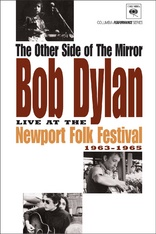本站提供 蓝光Blu-ray/HDTV 720P/1080P/2160P/4K 蓝光原盘 电影电视,硬盘代拷贝
代拷贝收费标准:例如:1TB硬盘(实际可拷贝930G)=100元,1.5TB硬盘(实际可拷贝1396GB)=150元,2TB硬盘(实际可拷贝1862GB)=200元,3TB硬盘(实际可拷贝2792GB)=300元。本站也有全新拷满自选片源硬盘出售。 网盘下载1G=0.2元,50G起。使用的网盘:115网盘 联系方式: 阿里旺旺:  淘宝店铺:http://94hd.taobao.com 淘宝店铺:http://94hd.taobao.com |
|
| ||
|---|---|---|
| 英文片名 | The Other Side of the Mirror: Bob Dylan at the Newport Folk Festival | |
| 中文片名 | 镜子的另一面:鲍勃·迪伦在纽波特音乐节 (1965) | |
| 类型 | 纪录, 音乐 | |
| 地区 | 英国 | |
| 文件大小 | 34.81 GB, 蓝光原盘 1080p | |
| 文件格式 | BDMV/AVC | |
| 音轨 | 英语 LPCM 5.1
英语 LPCM 2.0 英语 AC3 5.1 | |
| 字幕 | 无字幕 | |
| IMDB评分 | 8.3 | |
 ◎译 名 镜子的另一面: 鲍勃·迪伦在纽波特音乐节 BBC纪录片 ◎片 名 The Other Side of the Mirror/ Bob Dylan: Live At the Newport Folk Festival 1963-1965 BBC Arena ◎年 代 1963-1965 ◎影片类型 纪录片/音乐 ◎国 家 美国 ◎对白语言 英语 ◎片 长 83 mins 07 seconds ◎导 演 Murray Lerner ◎主 演 鲍勃·迪伦 Bob Dylan 乔安·巴兹 Joan Baez 朱迪·柯林斯 Judy Collins 约翰尼·卡什 Johnny Cash 皮特·西格尔 Pete Seeger ◎剧情简介 纪录片《The Other Side of the Mirror -- Bob Dylan Live at the Newport Folk Festival 1963-1965》收录了鲍勃·迪伦在1963-1965三届纽波特民谣音乐节中共计80分钟的演出,里面七成以上的内容在此前从未以任何形式发行。 其中,我们将看到迪伦当年大胆的演出画面,而他在舞台上“将民谣插电”的经典一幕已永载史册。 ◎相关介绍 鲍勃·迪伦Bob Dylan 的原名是Robert Allen Zimmerman,1941年5月24日生于明尼苏达州的杜勒斯(Duluth),6 岁时全家移居到一个叫希宾(Hibbing)的靠近矿区的小镇上,少年时期的迪伦Dylan 只不过是一个喜爱音乐的平凡男孩,对乡村乐感兴趣。以Hank Williams, James Dean, Woody Guthrie, Robert Johnson 和 ARTHAR Rimband为偶像。直到14岁时,迪伦Dylan在戏院里看到了《Blackboard Jungle》中的摇滚狂热, 从此他发现了音乐的另一种功能——它的社会学效应。摇流乐的歌词使人振奋,反映着青少年的个性、野心与叛逆。 自此以后,希宾小镇再也拴不住他的心了。1961年1月,鲍勃·迪伦Bob Dylan从明尼苏达州立大学辍学,开始专心致力于歌唱工作,并来到纽约Cate Wha 民谣音乐城(Folk City)和煤气灯(Gaslight)等著名的表演场所演出。由于迪伦Dylan的民谣歌曲受到知识分子的喜爱与支持,CBS的制作人John Hammond 与他正式签定了合约,不久Albert Closeman担任了迪伦Dylan的经纪人。此刻的迪伦Dylan是民谣风暴的煽动者,CBS 公司旗下最受重视的新人,也是年轻一代民谣歌手中最具潜力、呼声最高的艺人。 "Bob Dylan going electric" at the 1965 Newport Folk Festival is one of those epochal moments in rock history that seemingly everyone has heard about, but what few people seem to know is that it wasn't some ephemeral event that we only know from word of mouth -- filmmaker Murray Lerner documented the performances at the Newport Festival for several years running, and The Other Side of the Mirror collects footage from the three years Dylan appeared at the celebrated folk gathering, allowing us to see Dylan's rise through the folk scene for ourselves. Watching Lerner's documentary, what's most remarkable is how much Dylan changed over the course of 36 months; the young folkie performing at the afternoon "workshop" at the side of Joan Baez in 1963 is at once nervy and hesitant, singing his wordy tunes while chopping away at his acoustic guitar and energizing the crowd without seeming to know just what he's doing. In 1964, Dylan all but owns Newport, and he clearly knows it; he's the talk of the Festival, with Baez and Johnny Cash singing his praises (and his songs), and his command of the stage is visibly stronger and more confident while his new material (including "Mr. Tambourine Man" and "It Ain't Me, Babe" sees him moving away from the "protest songs" that first made his name. When the audience demands an encore after Dylan's evening set (Odetta and Dave Van Ronk were scheduled to follow him), Peter Yarrow tries to keep the show moving along while Dylan beams at the crowd's adulation, like the rock star he was quickly becoming. By the time the 1965 Newport Festival rolled around, Dylan's epochal "Like a Rolling Stone" was starting to scale the singles charts, and the hardcore folk audience was clearly of two minds about his popular (and populist) success. When Dylan, Fender Stratocaster in hand, performs "Maggie's Farm" backed by Al Kooper, Mike Bloomfield and the rhythm section from the Paul Butterfield Blues Band, the raucous but hard-driving number inspires a curious mixture of enthusiastic cheering and equally emphatic booing, and while legend has it that the version of "Like a Rolling Stone" that followed was a shambles, the song cooks despite drummer Sam Lay's difficulty in finding the groove, though if anything the division of the crowd's loyalties is even stronger afterward. After these two numbers, Dylan and his band leave the stage, with Yarrow (once again serving as MC) citing technical problems (if Pete Seeger really pulled the power on Dylan, as legend has it, there's no sign of it here); Dylan returns to the stage with an acoustic six-string to sing "Mr. Tambourine Man" and "It's All Over Now, Baby Blue" before vanishing into the night without comment. While much of the audience at Newport in 1965 wanted the "old" Dylan back, his strong, willful performances even on the acoustic stuff makes it obvious that the scrappy semi-amateur we saw at the beginning of the movie was gone forever, and the ovations suggest more than a few people wanted to see Dylan rock. Lerner's film tells us a certain amount of what we already knows, but it gently debunks a few myths about Dylan during this pivotal moment in his career, and his performances are committed and forceful throughout; no matter how many times you've read about Dylan's Newport shoot-out of 1965, seeing it is a revelatory experience, and Lerner has assembled this archival material with intelligence and taste. This is must-see viewing for anyone interested in Dylan or the folk scene of the '60s. | ||